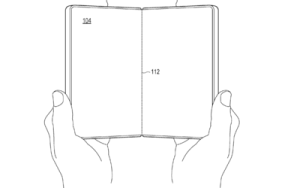Covid 19 resurges in the country: How THIS common symptom is key to the new variant
After a period of relative calm, COVID-19 is making a comeback, with a rise in cases reported globally, including in India. While most cases remain mild and patients are recovering at home, health officials are urging caution, particularly for individuals with co-morbidities, pregnant women, and the elderly. The virus's ability to mutate continues to generate new variants with varying transmission patterns and symptom profiles.
One of the most recent variants, known as NB.1.8.1 or "Nimbus," has gained attention due to a prevalent and intensely painful sore throat, often described as "razor blade throat."

The Emergence of the Nimbus Variant
The Nimbus variant (NB.1.8.1), a descendant of Omicron, was first identified in January 2025. Since its discovery, it has rapidly spread to numerous countries, including the United States, Canada, the United Kingdom, India, and parts of Asia. The World Health Organization (WHO) currently assesses the variant as mild, not causing severe illness.
Understanding the Intense Throat Pain
A defining characteristic of the Nimbus variant is the severity of throat pain reported by those infected. Patients often describe the sensation as "swallowing razor blades" or "glass," a significant departure from the milder sore throats associated with previous COVID-19 strains.
Doctors suggest that the intense pain arises from the virus causing significant inflammation and irritation of the throat tissues. This leads to a sensation of dryness and cracking, intensifying the pain, especially when eating or drinking.
Additional Symptoms to Watch Out For
While a painful sore throat is a hallmark of the Nimbus variant, it typically presents alongside other common COVID-19 symptoms:
- Cough
- Fever
- Fatigue
- Muscle aches
- Nasal congestion
- Headaches
- Nausea or vomiting
- Changes in taste or smell
These symptoms are consistent with those observed in other Omicron variants.
What To Do If You Experience a Sore Throat
It's important to note that not all sore throats are indicative of COVID-19. However, if you experience a sharp or burning sore throat accompanied by other symptoms, especially if swallowing becomes difficult, consider the following steps:
- Get tested for COVID-19: Testing is crucial to confirm a Nimbus variant infection.
- Isolate yourself: Stay home to prevent further transmission of the virus.
- Stay hydrated: Drink plenty of fluids to soothe your throat, even if it's painful.
- Use throat lozenges or gargle with warm salt water: These can provide temporary relief.
- Seek medical attention if symptoms worsen: Contact a healthcare professional immediately if you experience breathing difficulties, a persistent high fever, or severe pain.

Remember that bacterial infections can also cause sore throats and require antibiotic treatment. Since COVID-19 is a viral infection, antibiotics are ineffective. Avoid self-medicating and consult a doctor for proper diagnosis and treatment.
The Importance of Vaccination
Vaccination remains the most effective strategy to protect against severe illness, hospitalization, and death from the Nimbus variant. Current COVID-19 vaccines, particularly those with updated boosters, continue to offer significant protection. Vaccinated individuals who contract the Nimbus variant generally experience milder symptoms.
Newer articles
Older articles
-
 Government issues warning for these Android smartphone and tablet users
Government issues warning for these Android smartphone and tablet users
-
 This new AI tool can help you book train tickets, get refunds and check details on IRCTC website and app
This new AI tool can help you book train tickets, get refunds and check details on IRCTC website and app
-
 Microsoft plans to take on iPhone and Android smartphones with this new device
Microsoft plans to take on iPhone and Android smartphones with this new device
-
 Anderson–Tendulkar Trophy: India–England Test series enters new era, tribute to cricketing legends
Anderson–Tendulkar Trophy: India–England Test series enters new era, tribute to cricketing legends
-
 Mahbub Anam replaces Faruque Ahmed as new BPL chairman
Mahbub Anam replaces Faruque Ahmed as new BPL chairman
-
 India vs England: Can Bazball outplay India's new era? Key battles and what to expect
India vs England: Can Bazball outplay India's new era? Key battles and what to expect
-
 Tait rues new-ball miss as Nissanka punishes Bangladesh
Tait rues new-ball miss as Nissanka punishes Bangladesh
-
 iQoo Z9 Turbo new leak reveals key specifications: All the details
iQoo Z9 Turbo new leak reveals key specifications: All the details
-
 Teen Innovator Soars to New Heights: Mehar Singh Breaks Guinness World Record with Lightning-Fast Drone Ascent
Teen Innovator Soars to New Heights: Mehar Singh Breaks Guinness World Record with Lightning-Fast Drone Ascent
-
 Blue light damage: 7 reasons why not using the phone can improve health
Blue light damage: 7 reasons why not using the phone can improve health